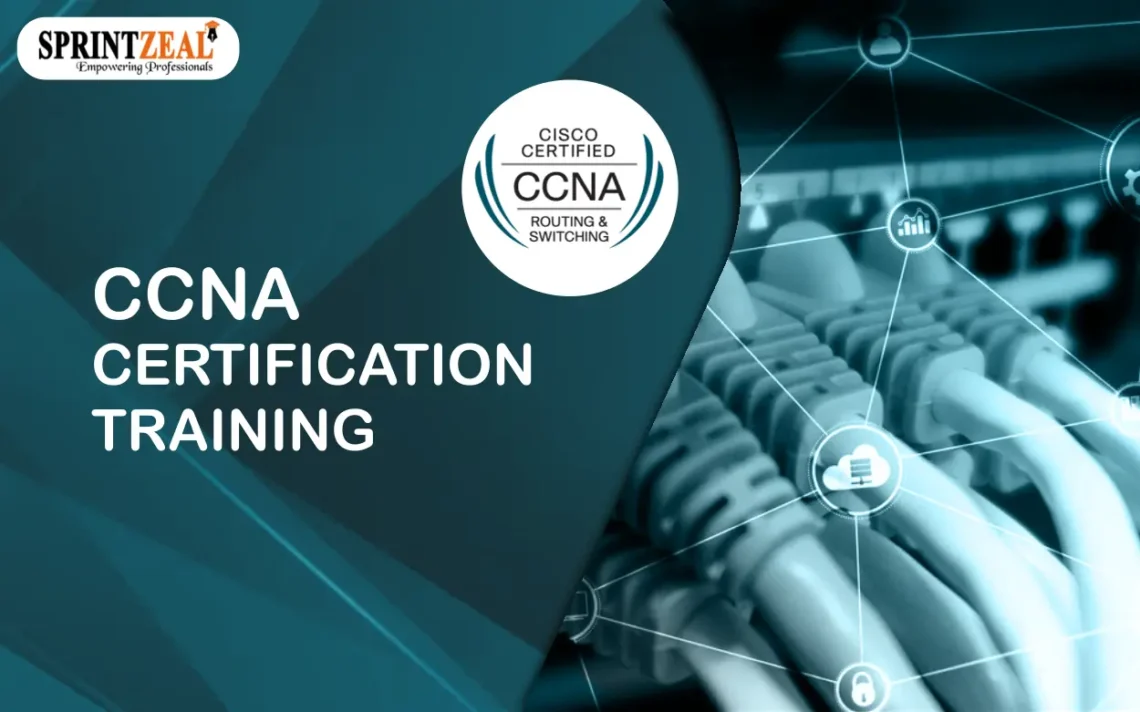The Cisco Certified Network Associate (CCNA) certification is one of the most respected and sought-after credentials in the networking industry. Achieving this certification can open doors to various career opportunities in network engineering, administration, and support. Whether you’re starting from scratch or already have some experience, obtaining the CCNA can help you gain valuable knowledge and skills in networking, making you a key player in the field of IT.
In this article, we will provide a detailed roadmap to guide you on your journey toward CCNA certification. From understanding the prerequisites to preparing for the exam, this roadmap will help you stay on track and achieve your goals.
Why Pursue the CCNA Certification?
Before diving into the preparation process, it’s important to understand why the CCNA certification is so valuable. Here are some key benefits of obtaining this certification:
- Industry Recognition: Cisco is a global leader in networking technologies, and the CCNA certification is widely recognized as a benchmark for networking skills.
- Career Advancement: Many organizations prioritize hiring candidates with CCNA certification. It can lead to higher-paying job opportunities and better career growth.
- Skill Development: The CCNA curriculum covers a wide range of topics, including IP connectivity, security fundamentals, and automation, which help build a strong foundation in networking.
- Stepping Stone to Advanced Certifications: The CCNA certification is a prerequisite for many advanced Cisco certifications, such as CCNP (Cisco Certified Network Professional) and CCIE (Cisco Certified Internetwork Expert).
Now that you understand the benefits of CCNA certification, let’s outline the steps to get started on your journey.
Step 1: Understand the CCNA Exam Format
The first step in preparing for the CCNA certification in Phoenix AZ is to understand the exam format and what topics will be covered. The current CCNA exam (200-301) is a comprehensive exam that covers a wide range of networking topics, including:
- Network Fundamentals: Concepts such as OSI model, IPv4 and IPv6 addressing, LANs, and WANs.
- Network Access: Ethernet, VLANs, spanning tree protocol, and wireless networking.
- IP Connectivity: Routing and switching concepts, IP routing (OSPF, EIGRP), and troubleshooting.
- IP Services: DHCP, NAT, QoS, NTP, and DNS.
- Security Fundamentals: Network security concepts, firewalls, and access control.
- Automation and Programmability: Basics of network automation, software-defined networking (SDN), and network programmability.
The CCNA exam is a 120-minute test that consists of multiple-choice questions, drag-and-drop questions, simulations, and more. You’ll need to pass with a score of at least 825 out of 1000.
Step 2: Build a Strong Foundation in Networking
If you’re new to networking, it’s essential to build a strong foundation in basic networking concepts before diving into CCNA-specific topics. Here are some key areas to focus on:
- Basic Networking Concepts: Learn the OSI and TCP/IP models, IP addressing, subnetting, and the basics of routing and switching.
- Hands-on Practice: Networking is a practical skill, and hands-on experience is crucial. You can set up your own home lab using Cisco devices or use network simulators such as Cisco Packet Tracer or GNS3.
- Study Resources: Start with beginner-level networking courses. Cisco’s “Introduction to Networks” and other similar online courses (e.g., on platforms like Coursera, Udemy, or LinkedIn Learning) can help you build the necessary knowledge base.
Step 3: Choose the Right Study Materials
Having access to the right study materials is crucial to your success in passing the CCNA exam. There are numerous resources available, including textbooks, online courses, practice exams, and more. Some of the most popular and recommended study materials for the CCNA exam include:
Books:
- Cisco Official Cert Guide: The official study guide from Cisco is a comprehensive resource that covers all exam topics in depth. It includes real-world examples and practice questions.
- Todd Lammle’s CCNA Study Guide: This is another highly recommended book that provides detailed explanations of all exam topics and includes hands-on labs.
Online Courses:
- Cisco Networking Academy: Cisco offers an official training program through its Networking Academy, which provides a structured learning path with interactive lessons and labs.
- Udemy and Coursera: These platforms offer CCNA courses that range from beginner to advanced levels, often taught by experienced instructors in the networking field.
Lab Simulators:
- Cisco Packet Tracer: This network simulation tool allows you to design, configure, and troubleshoot virtual networks. It’s perfect for hands-on practice.
- GNS3: Another popular network emulator that lets you simulate complex networks for CCNA practice.
Step 4: Set a Study Plan
Consistency is key when preparing for the CCNA certification. Having a well-organized study plan will help you stay on track and ensure you cover all the topics required for the exam. Here’s how you can structure your study plan:
- Set Clear Goals: Determine when you want to take the exam and break down your study schedule into manageable chunks. For example, you could aim to study for 2-3 hours a day, five days a week.
- Break Down the Exam Topics: Divide the exam topics into sections, and dedicate time each week to focus on specific areas such as network fundamentals, IP connectivity, security, etc.
- Incorporate Hands-on Labs: As you study each topic, make sure to include hands-on practice. This will help reinforce your understanding and build your confidence in configuring and troubleshooting networks.
- Take Practice Tests: Incorporate practice tests into your study plan to assess your knowledge and identify areas that need improvement. This will also help you become familiar with the exam format and question types.
Step 5: Focus on Hands-on Practice
One of the key aspects of the CCNA certification is its focus on practical skills. Cisco emphasizes the importance of being able to configure, manage, and troubleshoot networks in real-world environments. Therefore, hands-on practice is crucial for passing the CCNA exam.
Ways to Get Hands-on Practice:
- Home Lab: If you have access to Cisco devices, set up your own home lab. This will give you real-world experience with routers and switches.
- Simulators and Emulators: As mentioned earlier, tools like Cisco Packet Tracer and GNS3 are excellent alternatives for those who don’t have access to physical hardware.
- Online Labs: Several websites offer access to virtual labs where you can practice configuring Cisco devices.
Step 6: Take Practice Exams
Once you’ve covered all the exam topics and gained hands-on experience, it’s time to test your knowledge by taking practice exams. Practice tests are an excellent way to assess your readiness and identify any weak areas that need further review.
Here are some tips for using practice exams effectively:
- Simulate the Real Exam: Take practice exams under timed conditions to simulate the pressure of the real exam. This will help you manage your time effectively during the actual test.
- Review Your Mistakes: After completing each practice exam, thoroughly review your mistakes and focus on improving in those areas.
- Repeat: Take multiple practice exams to build your confidence and ensure you’re ready for the actual exam.
Step 7: Register and Take the CCNA Exam
Once you feel confident in your knowledge and skills, it’s time to register for the CCNA exam. You can register through Pearson VUE, the official testing partner for Cisco exams. The exam is available both in-person at testing centers and online.
Tips for Exam Day:
- Arrive Early: Whether you’re taking the exam in person or online, ensure you have everything set up in advance and arrive early.
- Stay Calm: During the exam, remain calm and focused. Read each question carefully and manage your time wisely.
- Use the Elimination Method: For multiple-choice questions, eliminate incorrect answers to narrow down your options.
Conclusion
The journey to obtaining the CCNA certification may seem daunting, but with a clear roadmap, dedication, and the right resources, you can achieve success. Start by building a strong foundation in networking, choosing the right study materials, setting a consistent study plan, and focusing on hands-on practice. By following this roadmap and staying disciplined, you’ll be well-prepared to pass the CCNA exam and take your career in networking to the next level.
Good luck on your CCNA journey!





